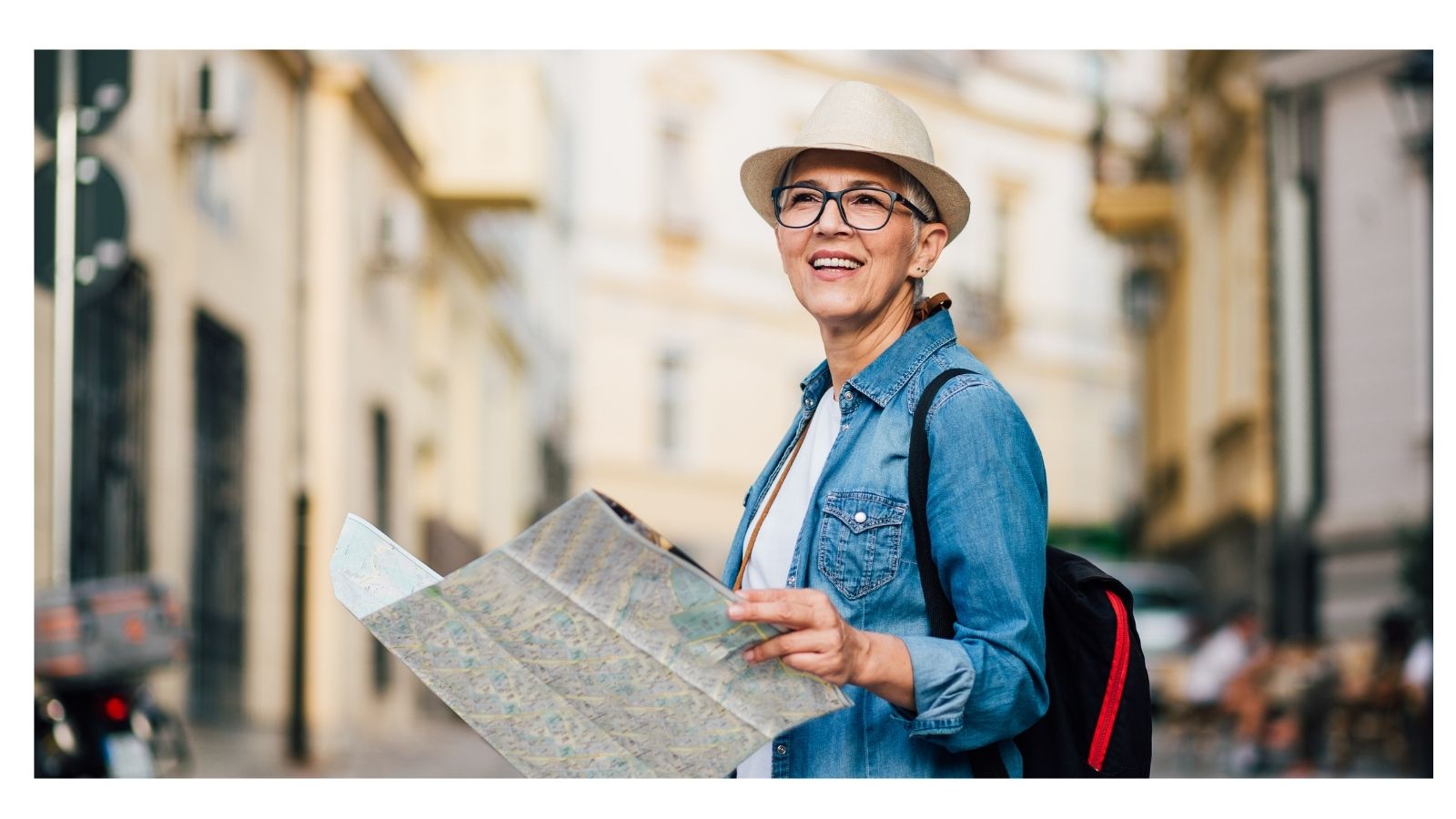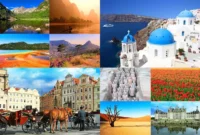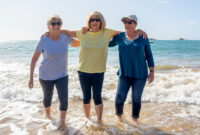Solo travel over 50 takes center stage, offering a unique blend of adventure and self-discovery. This guide delves into the practicalities and pleasures of independent travel in later life, addressing safety concerns, budget planning, destination choices, health considerations, and strategies for connecting with others. We’ll explore how to craft a fulfilling and enriching solo journey, tailored to the needs and desires of the over-50 traveler.
From navigating unfamiliar territories to managing finances and prioritizing well-being, this resource equips you with the knowledge and confidence to embark on a transformative solo adventure. Whether you’re drawn to bustling cities or tranquil landscapes, this guide provides a roadmap for planning a safe, enjoyable, and unforgettable experience.
Health and Wellness Considerations for Solo Travel Over 50
Embarking on solo adventures after 50 offers unparalleled freedom and self-discovery, but prioritizing health and wellness is paramount. This section outlines essential strategies to ensure a safe and enjoyable trip, focusing on proactive measures and preparedness for potential health challenges. Remember, responsible travel means safeguarding your well-being throughout your journey.
Essential Medications and Health Supplies
Packing the right medications and supplies is crucial for managing existing health conditions and addressing unexpected issues. A comprehensive kit ensures you’re prepared for various scenarios, minimizing disruption to your travel plans. It’s advisable to carry a copy of your medical history and a list of your medications with you, in addition to the physical supplies.
- Prescription medications: Pack a sufficient supply, exceeding the trip duration to account for delays. Consider carrying a doctor’s note explaining the necessity of your medications, particularly if traveling internationally.
- Over-the-counter medications: Include pain relievers (ibuprofen, acetaminophen), antihistamines, antacids, motion sickness remedies, and any personal medications for allergies or other common ailments.
- First-aid kit: A basic kit should contain bandages, antiseptic wipes, gauze pads, pain relief ointment, and any personal medical supplies like blister treatment.
- Thermometer: A digital thermometer is useful for monitoring temperature during illness.
- Personal hygiene items: Include hand sanitizer, soap, and any specific hygiene products relevant to your health needs.
Maintaining Physical Fitness and Well-being While Traveling
Staying active and maintaining a healthy lifestyle while traveling is key to preventing fatigue and enjoying your trip to the fullest. Regular exercise helps combat jet lag, boosts energy levels, and improves overall well-being.
Strategies include incorporating regular walks, utilizing hotel gyms or fitness facilities, choosing active excursions like hiking or cycling, and maintaining a balanced diet whenever possible. Remember to stay hydrated, especially in warmer climates, and listen to your body’s signals; rest when needed.
Dealing with Common Travel-Related Health Issues
Travel can expose you to various health concerns, from minor inconveniences to more serious issues. Being aware of potential problems and having a plan in place can make a significant difference.
Common issues include jet lag, dehydration, digestive upsets, minor injuries, and exposure to infectious diseases. Preventive measures include getting necessary vaccinations, practicing good hygiene, staying hydrated, eating at reputable establishments, and being mindful of food and water safety. If problems arise, seek medical attention promptly. Knowing the location of local medical facilities and pharmacies is important.
Importance of Travel Insurance and Emergency Medical Evacuation Plans
Travel insurance provides a crucial safety net, offering protection against unforeseen medical emergencies, trip cancellations, and lost luggage. It is especially vital for solo travelers over 50, who may be more vulnerable to health issues.
Comprehensive travel insurance should include medical coverage, emergency medical evacuation, repatriation of remains, and coverage for trip cancellations or interruptions. Review the policy details carefully before your trip to understand the extent of coverage and any exclusions. Consider purchasing a policy that specifically addresses the risks associated with your age and health status. Emergency medical evacuation plans are critical, particularly when traveling to remote locations or areas with limited medical facilities. Knowing that you have a plan in place for swift and safe evacuation in case of a serious medical emergency provides invaluable peace of mind.
Daily Routine Incorporating Health and Wellness Practices
Establishing a daily routine helps maintain a sense of normalcy and prioritize well-being while traveling. This can include simple practices that promote physical and mental health.
A sample routine might include starting the day with a light exercise, such as a walk or stretching, followed by a nutritious breakfast. Throughout the day, prioritize hydration, mindful eating, and regular breaks for relaxation. Incorporate time for relaxation activities, such as reading, journaling, or meditation, to manage stress and promote mental well-being. Evening routines could include a light dinner, relaxation techniques, and preparation for the next day’s adventures.
Illustrating the Experience of Solo Travel Over 50
Embarking on solo travel after 50 offers a unique blend of freedom, self-discovery, and the opportunity to connect with oneself and the world in a profoundly personal way. This narrative explores a day in the life of a solo female traveler in Kyoto, Japan, highlighting the sensory experiences, cultural encounters, and personal growth inherent in such a journey.
A Day in Kyoto: Sensory Immersion and Cultural Exploration
The day begins with the gentle chime of temple bells, a sound that weaves its way through the crisp morning air, redolent with the scent of pine and damp earth. Sunlight filters through the paper screens of my traditional ryokan (Japanese inn), illuminating the tatami mats beneath my feet. The texture is surprisingly soft and yielding, a comforting contrast to the polished wood of the low table where my breakfast awaits – a delicate array of pickled vegetables, miso soup, and perfectly steamed rice. The taste is subtle yet satisfying, a gentle awakening of the senses. My first destination is Fushimi Inari Shrine, a breathtaking cascade of thousands of vibrant vermillion torii gates winding up a mountainside. The visual spectacle is overwhelming – a sea of red against the backdrop of lush green foliage. The air is alive with the sounds of birdsong and the gentle murmur of fellow visitors, their voices a harmonious counterpoint to the rhythmic crunch of my footsteps on the gravel path. The scent of incense hangs heavy in the air, mingling with the earthy aroma of the forest. Later, lost in the labyrinthine streets of Gion, I stumble upon a small tea house. The aroma of matcha is intoxicating, and the texture of the finely ground powder is smooth and creamy on my tongue. The quiet serenity of the tea ceremony offers a moment of peaceful contemplation, a stark contrast to the bustling energy of the city. In the evening, I dine at a local restaurant, savoring the delicate flavors of authentic Japanese cuisine. The soft glow of the lanterns, the gentle chatter of the locals, and the subtle melody of traditional music create a truly immersive experience.
Navigating a Foreign Culture: Challenges and Rewards
Navigating Kyoto alone presented some challenges. The language barrier was initially daunting, requiring me to rely heavily on gestures, translation apps, and the kindness of strangers. Finding my way through unfamiliar streets and navigating public transportation took time and patience. However, these challenges were far outweighed by the rewards. The act of overcoming these obstacles fostered a sense of independence and resilience. The unexpected kindness and helpfulness of the Japanese people were deeply touching and created opportunities for genuine human connection. The ability to fully immerse myself in the culture, at my own pace, and to explore my interests without compromise, was incredibly rewarding.
Personal Growth and Self-Discovery
Solo travel in Kyoto fostered significant personal growth. The experience of being completely outside of my comfort zone forced me to rely on my own resourcefulness and adaptability. I learned to trust my instincts, to embrace the unknown, and to celebrate my own capabilities. The solitude provided ample opportunity for self-reflection, allowing me to gain a deeper understanding of my strengths, weaknesses, and aspirations. The experience was transformative, leaving me feeling more confident, independent, and empowered than ever before. The journey became a profound act of self-discovery, a testament to the resilience and adaptability of the human spirit, and the transformative power of embracing new experiences.
Wrap-Up
Embarking on solo travel over 50 is an empowering decision, offering a chance for personal growth, exploration, and the creation of lasting memories. By carefully considering safety, budget, destination, health, and social connection, you can craft a journey that aligns with your unique preferences and capabilities. This guide serves as a starting point, encouraging you to embrace the adventure and discover the boundless possibilities that await you on the open road.




